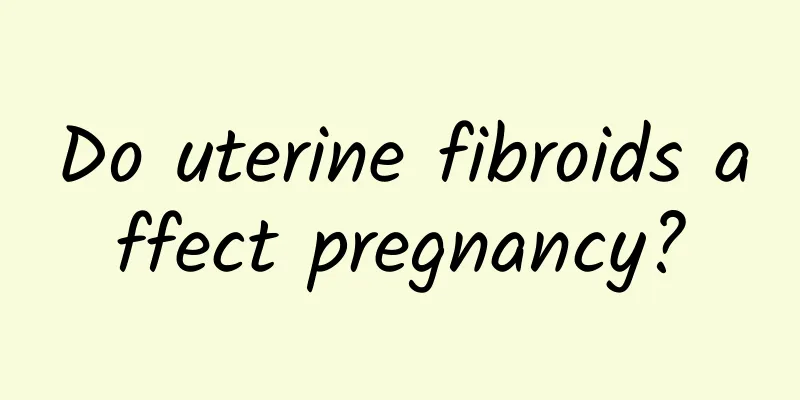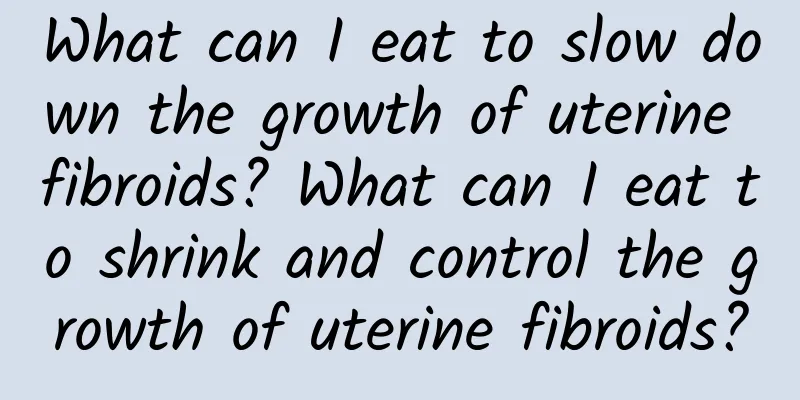Where are subserosal uterine fibroids located? What are the most common symptoms of subserosal uterine fibroids?

|
Where are subserosal uterine fibroids located? What are the more common symptoms of subserosal uterine fibroids? Subserosal uterine fibroids are a common gynecological disease. They are tumors formed by non-malignant proliferation of smooth muscle cells in the myometrium under the endometrium, and they mostly occur in middle-aged women. The location of uterine fibroids can be divided into different types, including subserosal uterine fibroids. Subserosal uterine fibroids are located in the subserosal layer of the uterine wall, which is the outermost layer of the uterus and is connected to the uterine cavity. Therefore, it may form in any part of the uterus. Subserosal uterine fibroids usually appear as single or multiple nodular masses of varying sizes. It can affect the normal endometrialization process of the endometrium and have a certain impact on women's menstrual cycle and fertility. Symptoms of subserosal uterine fibroids vary, depending on the size and location of the tumor. Some common symptoms include: 1. Irregular menstruation: Subserosal uterine fibroids may cause irregular menstruation, such as menorrhagia, prolonged menstrual cycle, and prolonged menstruation. 2. Pelvic pain: The growth of fibroids may cause pelvic pain or discomfort, especially during sexual intercourse and urination. 3. Compression of the bladder: If subserosal uterine fibroids grow close to the bladder, it may cause a feeling of compression, leading to frequent and urgent urination. In addition, according to research, subserosal uterine fibroids may also cause other symptoms, such as pelvic pressure, waist discomfort, abdominal mass, etc. If the fibroids are large or numerous, they may cause more serious symptoms such as anemia and compression of abdominal organs. The exact cause of subserosal uterine fibroids is still unclear, but it is generally believed that abnormal hormone levels and genetic factors play a role in their occurrence and development. Genetic factors can affect hormone metabolism in the body, leading to the growth of fibroids. In addition, changes in women's hormone levels, such as progesterone, estrogen, and ovarian hormone, may also promote the occurrence of subserosal uterine fibroids. For women with subserosal uterine fibroids, treatment options may be determined based on the severity of the condition and factors such as the patient's age and fertility plans. In general, observation plus conservative treatment can be used for mild symptoms or for women before menopause. For patients with significant symptoms or unaffected fertility, surgical removal of the uterine fibroids may be a better option. For women with severe symptoms or limited fertility, hysterectomy may need to be considered. In conclusion, subserosal uterine fibroids are a common gynecological disease, and its common symptoms include irregular menstruation, pelvic pain, and bladder compression. It can cause discomfort to women by affecting the menstrual cycle and the endometriosis process. Understanding the symptoms and treatment methods of subserosal uterine fibroids is very important for women's health. If you suspect that you have subserosal uterine fibroids, please consult a professional doctor and seek treatment advice in time. |
Recommend
Mooncakes "fight" fat and prevent bad cholesterol
Mid-Autumn Festival is coming soon! Many people h...
Can female cervicitis lead to infertility? What are the causes of female cervicitis leading to infertility?
In real life, there are many women suffering from...
Will miscarriage recur? The causes of miscarriage are complex
Miscarriage can recur. The causes of miscarriage ...
Care of the uterus after abortion
Many young women choose abortion for many reasons...
What medicine is effective for amenorrhea
With the continuous changes in living environment...
Can ovarian cysts cause abdominal pain?
Once the symptoms of ovarian cysts appear, they m...
How to remove uterine fibroids? What should be paid attention to when removing uterine fibroids?
If uterine fibroids are not treated in time, it w...
Experts introduce several common precautions for ectopic pregnancy
Ectopic pregnancy is a gynecological disease that...
What are the causes of uterine fibroids? Common symptoms of uterine fibroids
Uterine fibroids are the most common benign tumor...
What medicine should I take for mild anemia caused by uterine fibroids? What should I do for mild anemia caused by uterine fibroids?
What medicine should I take for mild anemia cause...
Is it normal to have thin vaginal discharge? It's hard to say
It is hard to say whether thin leucorrhea is norm...
The secret to gaining muscle and losing fat: train big muscles! Do Russian twists to create a slim waist
Want to build muscle strength and improve metabol...
What medicine should patients with uterine fibroids take to treat uterine fibroids? What foods should patients with uterine fibroids not eat?
What medicine should patients with uterine fibroi...
How to effectively prevent premature menopause
What are the prevention methods of menopause? It ...
What are the treatments for menopause?
After suffering from menopause, the diet of menop...









